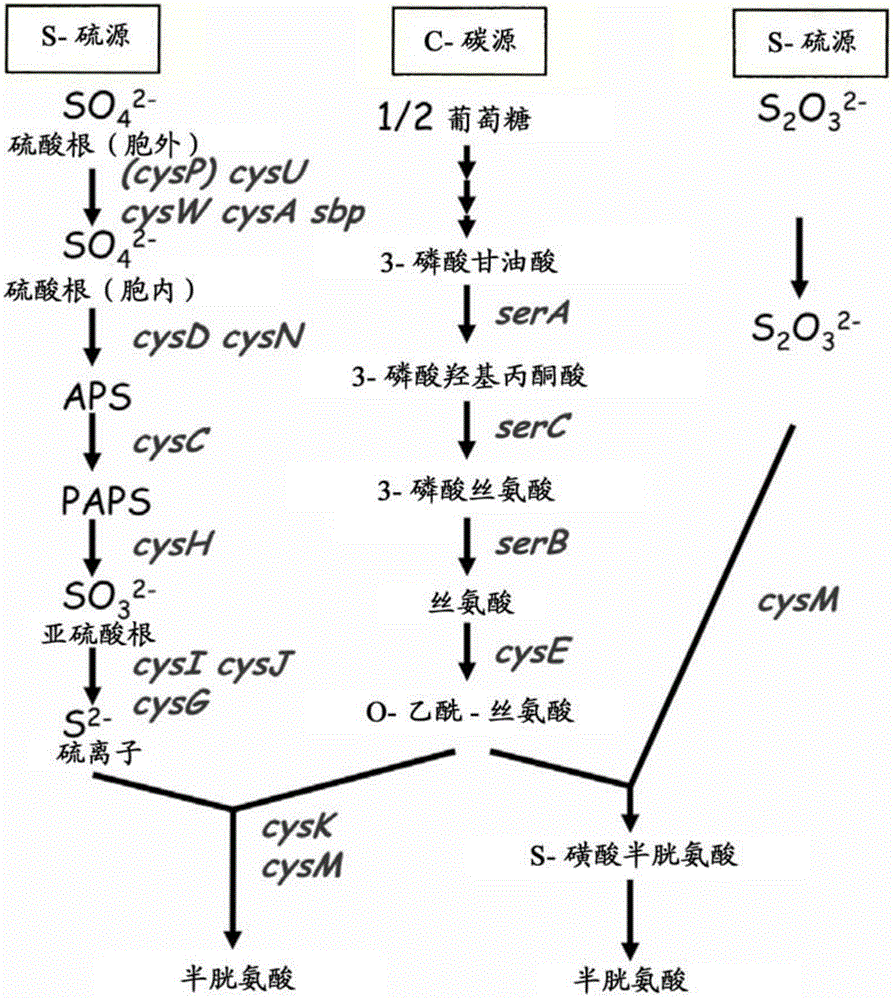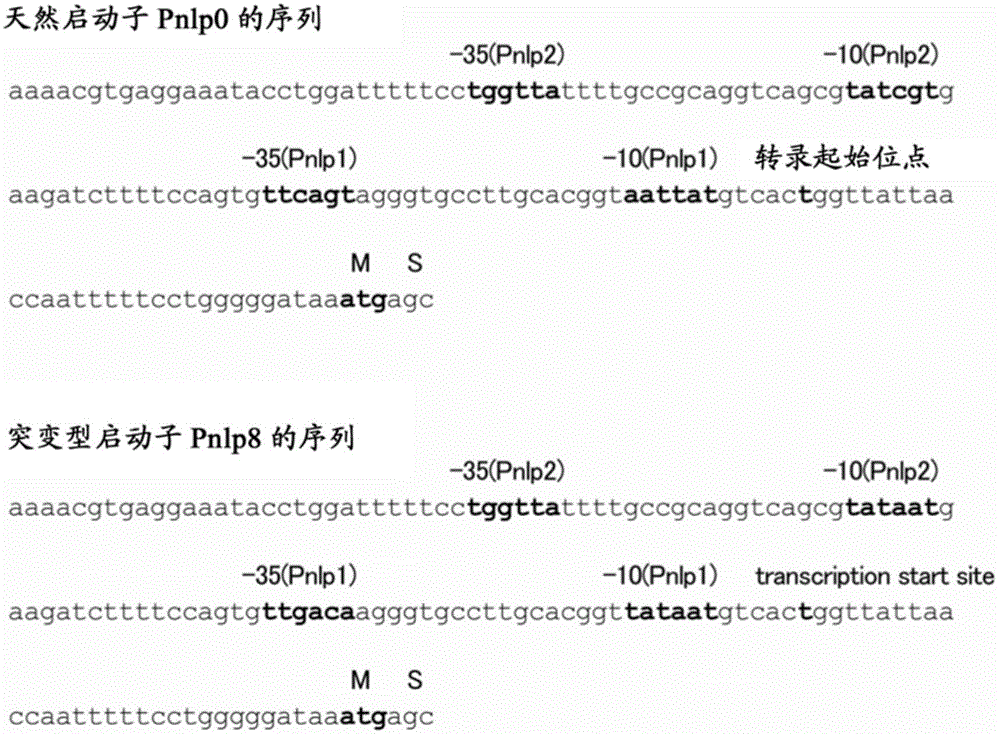Method for producing l-cysteine
A technology of cysteine and production capacity, applied in the field of producing L-cysteine or its related substances, can solve the problem of not suggesting cysG gene and the like
- Summary
- Abstract
- Description
- Claims
- Application Information
AI Technical Summary
Problems solved by technology
Method used
Image
Examples
Embodiment 1
[0175] Example 1: Production of cysteine by Escherichia coli overexpressing the cysG or cysGJI gene using thiosulfuric acid as a sulfur source
[0176] (1) Construction of expression plasmids of genes involved in sulfurous acid reduction
[0177] As for genes involved in sulfite reduction, the cysG gene of Pantoea ananatis SC17 strain, the cysGJI gene of Pantoea ananatis SC17 strain, the cysG gene of Escherichia coli M1655 strain, and the cysGJI gene of Escherichia coli MG1655 strain were used. Each of these genes was cloned into an expression vector to construct an expression plasmid for the gene. The steps are described in (1-1) to (1-7).
[0178] (1-1) Construction of expression vector
[0179] As the expression vector, pMIV-Pnlp23-ter (Japanese Patent Laid-Open No. 2008-99668 ) constructed from pMIV-5JS was used. This vector has a strong promoter nlp23 promoter (Pnlp23) and rrnB terminator, and has SalI and XbaI sites between Pnlp23 and rrnB terminator. By using prim...
Embodiment 2
[0249] Example 2: Production of cysteine by Pantoea ananatis overexpressing the cysG gene or the cysGJI gene using thiosulfate as a sulfur source
[0250] (1) Construction of Pantoea ananatis cysteine producing strain
[0251] Regarding the Pantoea ananatis cysteine-producing strain, an EYPSint-1MΔd0191(S) strain was constructed in which the cysE5 gene, the yeaS gene, the serA348 gene, and the cysM gene were introduced into the chromosome, the expression of the cysPTWA gene was enhanced in the strain, and d0191 gene deletion. The construction steps are shown in (1-1) to (1-5).
[0252] (1-1) Introducing cysE5 gene and yeaS gene into Pantoea ananatis SC17 strain
[0253] The cysE5 gene and the yeaS gene were introduced into the chromosome of the Pantoea ananatis SC17 strain to construct the EY19(s) strain. The cysE5 gene is a mutant gene of the cysE gene, which encodes a mutant serine acyltransferase (SAT), in which the Val residue and Asp residue at positions 95 and 96 ...
PUM
 Login to View More
Login to View More Abstract
Description
Claims
Application Information
 Login to View More
Login to View More - R&D
- Intellectual Property
- Life Sciences
- Materials
- Tech Scout
- Unparalleled Data Quality
- Higher Quality Content
- 60% Fewer Hallucinations
Browse by: Latest US Patents, China's latest patents, Technical Efficacy Thesaurus, Application Domain, Technology Topic, Popular Technical Reports.
© 2025 PatSnap. All rights reserved.Legal|Privacy policy|Modern Slavery Act Transparency Statement|Sitemap|About US| Contact US: help@patsnap.com



